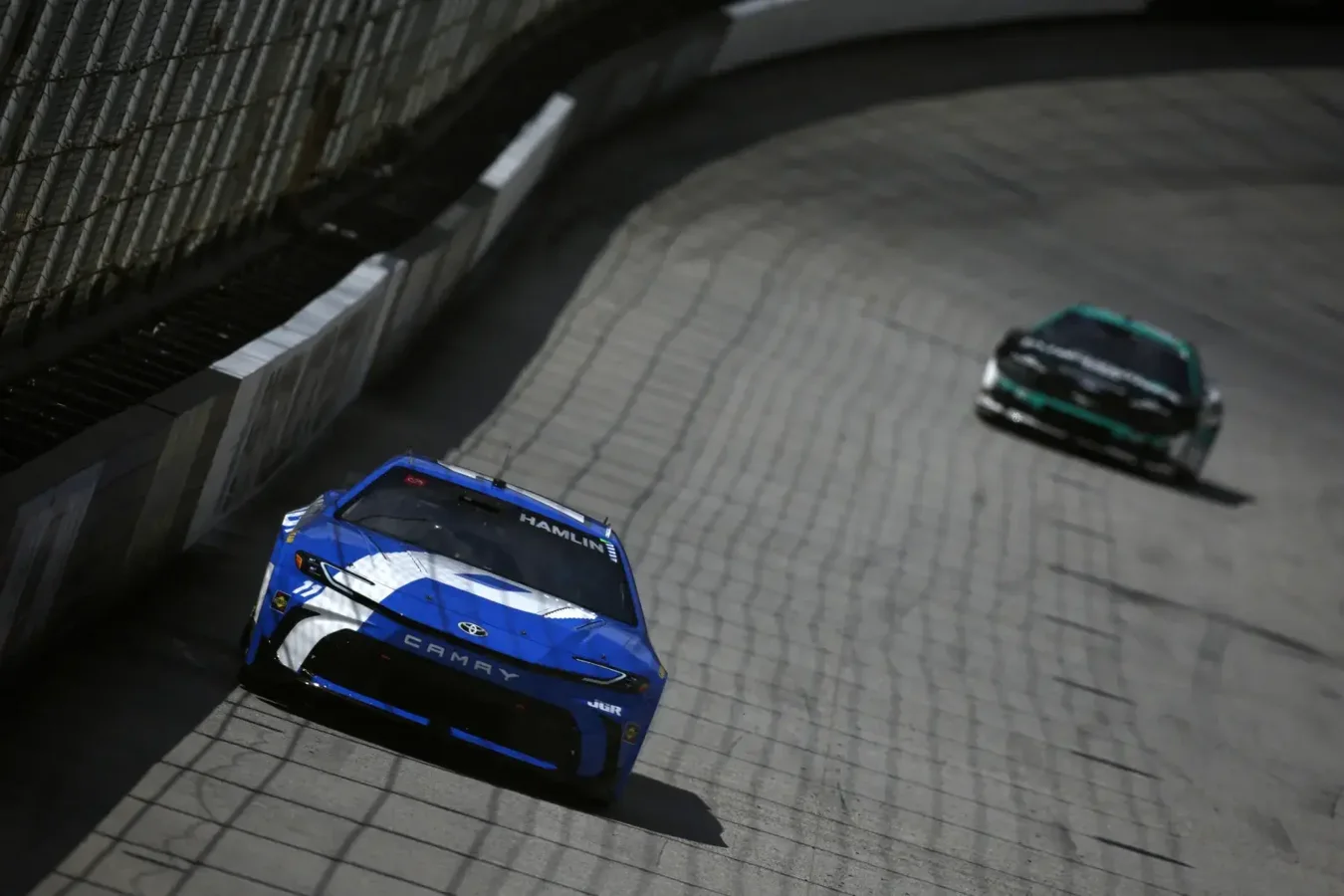Denny Hamlin’s pursuit of a strong finish at the Bass Pro Shops Night Race at Bristol Motor Speedway concluded in dramatic fashion after he received a heavy penalty stemming from a detached wheel late in the race. The Denny Hamlin Bristol penalty controversy erupted on Saturday night when his No. 11 toyota/”>Toyota’s right-front tire came loose on Lap 384, causing a severe collision with AJ Allmendinger and bringing out the thirteenth caution.
Fresh off a victory at Gateway and entering Bristol in sixth place for the playoff standings, Hamlin maintained a steady presence at the front, consistently running inside the top ten and securing a Stage 2 finish in tenth. His night, however, changed instantly when the separated wheel led to a violent incident in Turn 4, resulting in immediate disciplinary action from race control. NASCAR officials issued a two-lap penalty, attributing it to the lost wheel, despite Hamlin’s crew chief, Chris Gayle, arguing that contact prior to the crash might have triggered the failure rather than a pit crew mistake. Ultimately, Hamlin was forced to retire to the garage, closing his night with a disappointing thirty-first place result.
Debate Over Culpability as Hamlin’s Team Seeks Answers
After the incident, questions surrounding responsibility emerged both within the team and from observers. Chris Gayle maintained that prior contact may have loosened the lug nut, suggesting the part failure may not have solely been the fault of the crew.
“Chris Gayle tells Denny Hamlin they think the contact is what led to the wheel coming off, but nobody (from NASCAR) wants to hear that right now.”
— Jeff Gluck (@jeff_gluck), September 14, 2025. As the officials stood by their penalty decision, frustrations mounted on the No. 11 team and across the racing community.
The event thrust the spotlight on how NASCAR applies penalties for wheel-related infractions, stoking discussion about the fairness of the ruling, especially in high-stakes playoff situations. Multiple insiders echoed Gayle’s perspective, noting that the mechanical issue occurred as a result of race contact rather than crew error. The damage from the crash left Hamlin with no choice but to withdraw from the race, adding to his playoff woes.
Fan Backlash and Next Gen Car Design Scrutinized
The penalty and its timing sent shockwaves through NASCAR’s engaged fan base, instantly fueling an uproar online. Many supporters argued Hamlin became collateral damage for a broader issue: the widely debated Next Gen car’s single-lug nut design. This new setup, introduced in 2022, has resulted in frequent wheel failures and ongoing complaints over the harshness of corresponding penalties.
Some supporters directly referenced race broadcasts and replays, criticizing the penalty as a consequence of poor engineering rather than team neglect.
“In the stands and the replay on the big screen it was pretty clear the nut got sheared off by thr contact, would suck for the 11 team to be punished for yet another design flaw in the car.”
— FailEarnhardtJr1-8 (@asscassin8), September 14, 2025.
The frustration extended to the feeling that NASCAR treats Hamlin unfairly when it comes to disciplinary action.
“nascar won’t think twice because it’s Denny.”
— FailEarnhardtJr1-8 (@asscassin8), September 14, 2025. Another racing fan added,
“Sparks on track before contact. It was their fault and they know it,”
signaling that signs of trouble were visible before the incident.
This negative sentiment was compounded by worries that Hamlin faces harsher judgment than his competitors.
“You know NASCAR isn’t going to give Denny the benefit of the doubt on anything right now.”
— FailEarnhardtJr1-8 (@asscassin8), September 14, 2025. The penalty revived concerns about the design standards and penalty protocols attached to the Next Gen platform, suggesting that technical flaws continue to have outsized consequences for drivers and crews.
Wider Repercussions for NASCAR’s Approach and Playoff Outlook
The enforcement of the two-lap penalty against Hamlin, in a playoff race no less, has amplified calls for NASCAR to reevaluate its approach to both car design and rule enforcement. While series officials argue their strict stance is essential for safety and to deter mistakes during pit stops, many teams and fans insist that the rules don’t account for situations where faulty parts or racing contact are to blame. With Hamlin’s Bristol finish deeply impacting his playoff hopes, the penalty is likely to feed ongoing debate about whether this generation of cars has made racing unnecessarily punitive for those unlucky enough to experience equipment failures.
As NASCAR heads toward its next playoff events, scrutiny on technical regulations and officiating will remain high. Meanwhile, the Denny Hamlin Bristol penalty controversy serves as a stark example of how rule interpretation, car design flaws, and the playoff system can converge to spark intense frustration—and, potentially, drive discussions on the future of NASCAR competition.
